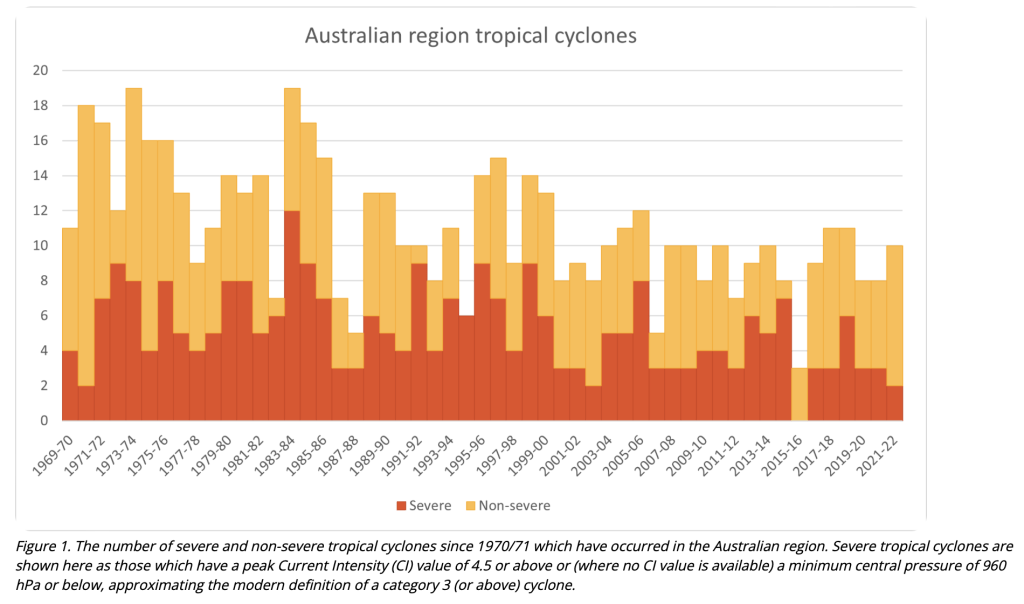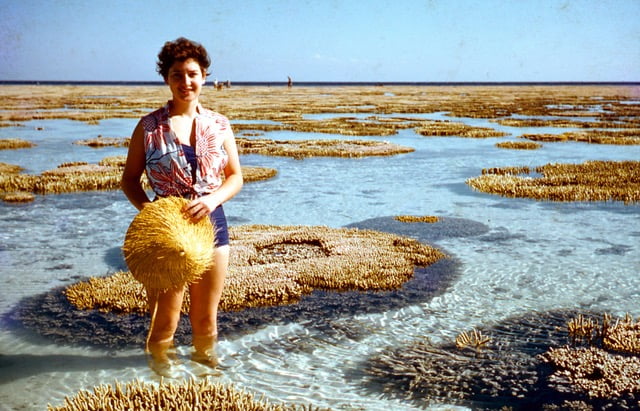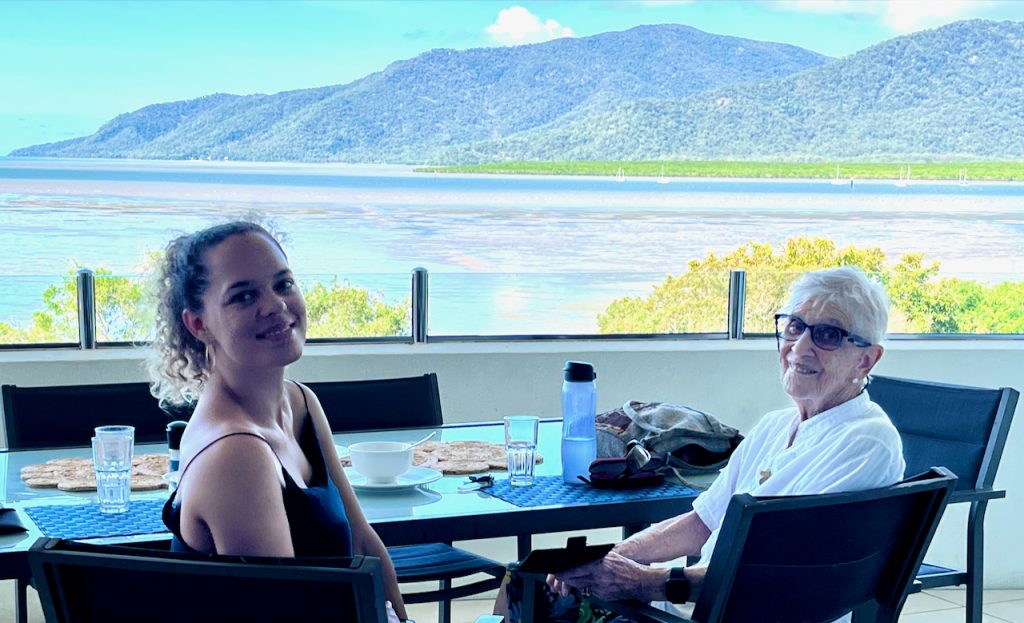Back in the 1950s, it was only after Easter each year, that resorts on Great Barrier Reef islands allowed tourists to visit and stay. It was only after Easter that it was considered safe, because that was the end of the cyclone season.
The Australian Bureau of Meteorology now classify the period from November to April as the cyclone season, and most years they predict an increase in both the number and intensity of cyclones. For example, earlier this year it was announced via The Australian Broadcasting Corporation that:
For Queensland climatologically, we see the most cyclones in February, and we also see quite a few in March as well,” senior meteorologist Laura Boekel said.
The BOM’s latest cyclone outlook, released in October, predicted more tropical cyclones that average this season.
Year on year, however, contrary to human-caused global warming theory, neither the number nor intensity of cyclones has increased at the Great Barrier Reef. The available data shows that there has been a steady decline in both the number and intensity of cyclones since the 1970s.
This is probably why coral cover, as measured around the perimeter of coral reefs, is reported to be so high. The most recent Australian Institute of Marine Science survey reported coral cover to be the highest in 36 years. Cyclones can be incredibly damaging to corals, with fewer cyclones there will be more coral.

Contrary to expectations, this last 2022-23 season has also been quiet, with few cyclones. The exact number will hopefully be published at the Bureau’s cyclone page, that is here. But I doubt there will be a media release.
My mother lived and worked on Heron Island at the Great Barrier Reef in 1955. That was the same year Bob Endean established the University of Queensland Heron Island Research Station. He went on to become a famous marine biologist, and instrumental in the formation of the Great Barrier Reef Marine Park Authority (GBRMPA) in 1975. (They apparently drank together some evening, Mum the liquor Crème de menthe while Bob drank beer.)
There are photographs of my mother, then Joan Edith Pearce, standing knee deep surrounded by Porites coral micro atolls that are stunted and bleached.

Mum says no one talked about ‘coral bleaching’ back then, it was always crown-of-thorn star fish that were going to cause the imminent demise of the Great Barrier Reef.
Mum, who is now 92, will tell you that the only mention of ‘bleaching’ back then was of the laundry, that was her responsibility.
Mum migrated to Australia after the war. She took jobs that also provided accommodation; working first at a Tuberculous hospital in Melbourne before moving north to Queensland and the Great Barrier Reef, and from Queensland hitch hiking to Darwin where she meet and married my father.
Mum has always been adventurous. And at 92 she recently decided to packing up, and is moving again, this time to Cairns. So, she is back at the Great Barrier Reef.

There is a page at this website with more photographs of Mum at Heron Island, and also a link to her autobiography: https://jennifermarohasy.com/joanedith/
****
The feature image shows my mother amongst coral micro-atolls at Heron Island on a low tide in April 1955.

 Jennifer Marohasy BSc PhD is a critical thinker with expertise in the scientific method.
Jennifer Marohasy BSc PhD is a critical thinker with expertise in the scientific method.

I am about 2 to 3 years younger than your mother and I do remember them talking about coral bleaching, well coral fading.
It was a warning that if you stole bits of coral the colours would fade away. I hope the warning saved parts of the reef.
Thank you for your work Jennifer.
Your mum seems a bright spark. Seems vitality is in your genes, Thanks for your work
Thanks Jen, that brings back many memories.
But you’re right. Cyclones are definitely reducing.
I seem to remember last time we had a triple la Nina there were cyclones everywhere and I spent the period trying to stop ocean-front homes from being washed out to sea. You couldn’t give them away at that time.
Those same homes are now selling for tens of millions.
Also, cyclone Tracy did a bit of damage to Darwin:
https://www.nma.gov.au/defining-moments/resources/cyclone-tracy
The same place was wiped out in 1897 from an earlier cyclone.
Virtually no cyclones anywhere, this time.